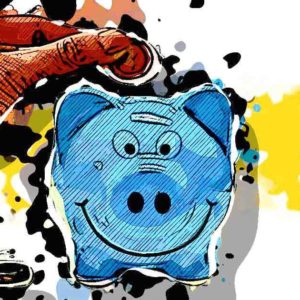For businesses considering ways in which their production operations can be adjusted to be more environmentally considerate, the closed-loop economy model is a perfect place to start. Through a production process that utilizes repurposed raw materials for each cycle, businesses are able to conserve raw material supplies at an incredible rate. Not to mention, these models have become simplified enough that they’re able to be integrated into most businesses existing strategies without much hassle. If your business is interested in how this model can impact its processes, this post will include all of the information necessary.
It’s best to begin with a breakdown of the model itself. Often times this model is referred to as a closed-loop economy, where the production models produce no waste. That’s to say that each and every input in the production process is reused, recycled, shared, or repaired in some way. With reusable inputs, excess waste is eliminated, and existing inputs are able to be used again in the creation process of another new substance or product.
This practice is on pace to impact the economy by a large margin with estimates suggesting a contribution of nearly $4.5 trillion dollars by 2030. On a local level, the ways in which businesses benefit from strategy is quite impactful. An increased sense of customer loyalty, in addition to improved public perception and a great deal of long-term savings through reduced reliance on external suppliers.
On a global level, this is one of the greatest benefits of companies opting into a closed-loop economy model. Through such compounded reduction of reliance on raw material supplies, the environment greatly benefits. Internally, businesses also grow as a result of these models. Increased innovation in problem solving and expedited job growth opportunities for example. In addition, companies often save a great deal which contribute to improving corporate profits.
Applying The Model
A closed-loop economy is accomplished when companies are able to work together to create a closed-loop supply chain. Meaning all raw material used in any production process will be reused. This may take some time to accomplish, as in most cases it requires a complete rethinking of how products are packaged, manufactured, sold, refurbished and reused. However, this model works in such a way that the more companies that employ it, more raw material can be saved and the greater the benefits to companies and consumers can be.
The challenge is that the majority of companies utilize a linear economy model. In this model, the raw materials used by manufacturers to design and create their products are incapable of being reused. With such little material being saved, the process of creating the product a fresh set of inputs.
Only through a closed-loop economy can businesses avoid these inefficiencies. With no end to a production cycle as a result of negligent amounts of wasted inputs or outputs, these materials collected from the production process are endlessly reprocessed and then reused. Any business interested in learning more about how this model can further reduce their manufacturing costs and improve their product offerings can find additional information included within the infographic featured alongside this post. Courtesy of Quincy Recycle.



